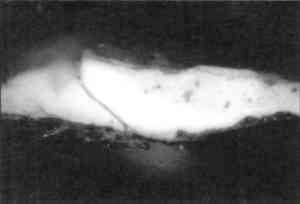BIERSTADT'S LATE PAINTINGS: METHODS, MATERIALS, AND MADNESSDARE MYERS HARTWELL
1 INTRODUCTIONAlbert Bierstadt was at the height of both his artistic powers and his popularity in the 1860s. By 1874, however, critics and public alike found him pass�, and although he countinued to produce paintings of quality, it is obvious that his artistic abilities were also in decline (Hendricks 1988). Nevertheless, technical examinations of his late paintings have revealed important information about his working methods as well as his tendency to experiment with materials in his decline, and it is on certain of these materials that I will focus here. This investigation into Bierstadt's working methods and materials was precipitated when both versions of Bierstadt's most important late painting, The Last of the Buffalo, underwent conservation at approximately the same time, affording the conservators involved in their treatment a unique opportunity to compare the two pictures (Hartwell and Parkin 1999). The painting in the collection of the Corcoran Gallery of Art, Washington, D.C., was treated by the author; the version belonging to the Buffalo Bill Historical Center in Cody, Wyoming, was treated by Helen Mar Parkin and Perry Huston of Perry C. Huston and Associates, Inc., Fort Worth, Texas. The two paintings are very close in size and composition, and comparison of cross sections taken from both of them show a similar layer structure of thick lead-white preparation over which one or more thin, relatively opaque layers of oil-based paint build up the design (figs. 1, 2). The pigments analyzed in each painting also proved to be the same (Berrie and Palmer 1986, 1988a, 1988b). Nevertheless, in the Cody picture there is an additional layer, highly refelective and almost black in color, between the lead-white preparation and the canvas. No traces of this layer are found in the Corcoran painting.
The black layer is continuous in the Cody picture. At the time of the treatment it was visible in areas of extensive abrasion, in the craquelure, and at the edges of the painting. Parkin and Huston speculated in the treatment report that the layer was “possibly graphite” because of its shiny, metallic appearance (Parkin and Huston 1985). After the cross sections were taken and the Scientific Research Department of the National Gallery of Art was asked to analyze the black layer because of its peculiar appearance, the preliminary |

